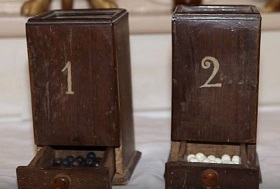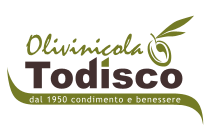"The year 1528 was very unhappy for all of Italy, particularly for our Kingdom of Naples because there were three scourges of God, war, plague and hunger".
The Neapolitans, strongly terrified, organized processions of penance, but the viceroy forbade them to take place and invited the entire people to gather to pray in the churches. At the same time in 1528, Francis I, King of France in continuous diatribe with the Emperor Charles V who also owned the Kingdom of Naples, sent the Viscount of Lautrec to Italy who, informed of the enormous difficulties of Naples resulting from hunger and thirst, advanced with his army towards Naples, but due to a tactical error of the French policy, the Genoese besieged Naples by sea. The Doria in fact passed to the Spanish front and lifted the naval blockade, while the plague was a real extermination among the troops of Lautrec. The remains of the French army decimated by the plague surrendered on 8 September 1528, the day of the Nativity of Mary. The plague had arrived in Italy following the Lanzichenecchi del Sacco di Roma in 1527 and the subsequent plague of Milan described in the Promessi Sposi.
The people were therefore free from the external enemy, but frightened by the infection of the plague which, arrived at the hands of the invading armies, continued to sow death and mourning. The epidemic still persisted at the beginning of 1529 and in the month of March the apex of the infections occurred. With the arrival of summer, which was quite unusual, the scourge began to disappear.
Many described what happened and attributed the end of the siege to the intervention of the Madonna, as well as that of the plague:
"In the month of June of this year 1529, on the third day of Pasca Rosata (Pentecost Tuesday), an image of the Most Holy Mother of God was found near the walls of the city of Naples, by revelation of an old woman who lived nearby , to which the end of the plague was promised by the Mother of God, as can be seen with effect; and therefore the City of Naples immediately began to build a Church in the said Image, with the title of Madonna of Constantinople, and hopefully, that protect it from said disease for its future in every future time. And not only did Our Lady of Constantinople free Naples from the plague, but also from war and hunger "
The veneration of Santa Maria di Costantinopoli could have been extended from Naples also here to Putignano by means of the Judge Pietro Romanello and who returned here to his country of origin, after having graduated in law and notaries who, to exercise his profession, built the Cappella, endowing it with the ancient framework still existing and then with his testament of 11/27/1858 he bequeathed it together with all his possessions and other buildings to the Archconfraternity of the Blessed Sacrament with the commitment of the aforementioned heirs to have a Mass celebrated there a week for his soul and two more a month for his parents.
The Madonna of Constantinople can therefore be associated with San Cataldo, San Michele, San Sebastiano, San Rocco and finally Santo Stefano in the role of Protectors of Putignano from the danger of the plague which in the past was lethal wherever it arrived.

 This website project born from the idea of Gianni Musaio is enclosed in a team spirit and is the result of the collaboration of people, ordinary citizens, who care about the historical, cultural, artistic, geographical, food and wine heritage of the historic center of Putignano, a town in to live.
This website project born from the idea of Gianni Musaio is enclosed in a team spirit and is the result of the collaboration of people, ordinary citizens, who care about the historical, cultural, artistic, geographical, food and wine heritage of the historic center of Putignano, a town in to live.

















